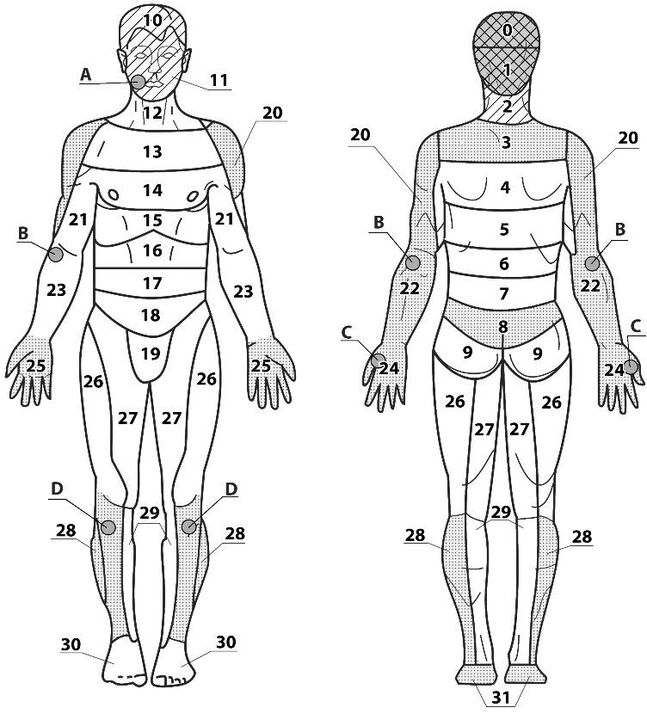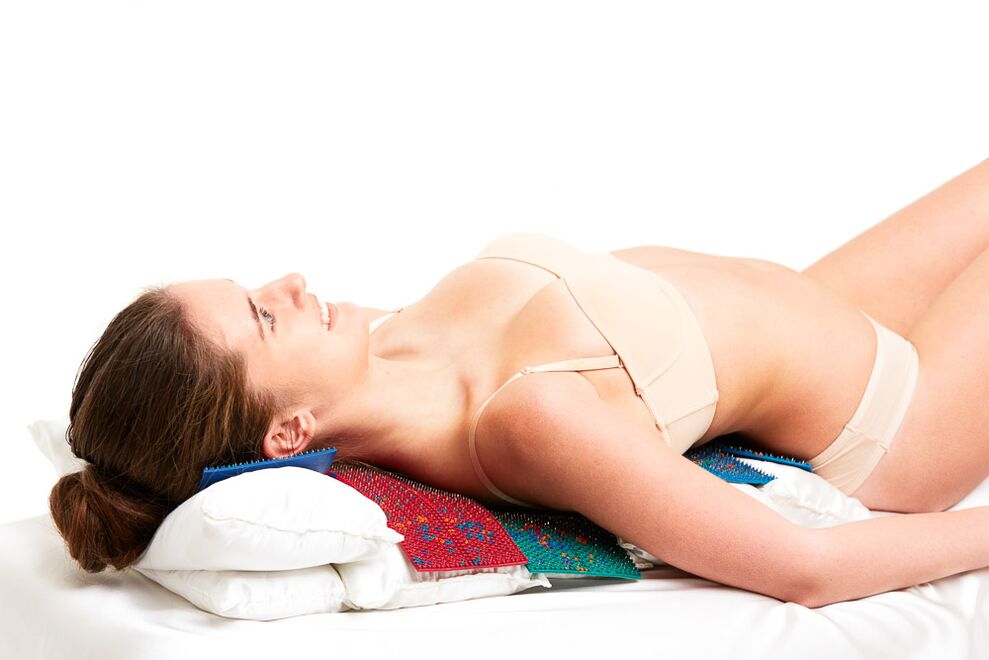Cervical osteochondrosis is a progressive dystrophic-degenerative lesion of the intervertebral discs in the 1-7 vertebrae of the cervical spine.
As a result of cervical osteochondrosis, there is deformation, exhaustion, and then damage to the vertebral bodies. This disrupts the normal blood supply and nerve conduction in the neck and in the areas innervated by the nerve roots of the cervical spine.
Cervical osteochondrosis can either be isolated or combined with osteochondrosis of other parts - the sternum, lumbar and sacrum.
causes
A number of factors are distinguished that predispose to the development of osteochondrosis. These include:
- sedentary and sedentary lifestyle;
- sedentary activities with a static load on the neck;
- Overweight, insufficient physical development;
- dysplastic processes of connective tissue;
- Circulatory disorders in the neck;
- Neck injuries;
- Scoliosis, poor posture, uncomfortable pillows and mattresses;
- hereditary predisposition, metabolic defects.
Symptoms of cervical osteochondrosis. Complications
The cervical spine is most susceptible to developing osteochondrosis. The vertebrae in it are the smallest compared to other parts of the spine, the muscle frame is not very pronounced, the weight of the head and the upright posture act on the vertebrae. In the cervical spine, the vertebrae are close together. Even a minimal change can lead to compression and even displacement of nerves and blood vessels.
The most characteristic symptom that patients complain about is pain in the cervical spine. Depending on the affected area, pain can be localized: in the collarbone and shoulder; throughout the cervical spine; on the front of the chest.
The first signs of cervical osteochondrosis can be insignificant: heaviness in the head, headache in the back of the head, pain in the neck in the evening, numbness or tingling in the shoulders and arms.
Guiding symptoms
Vegetative-dystonic.
Severe "stabbing" pain in the neck, in the area just below the occiput. Pain occurs after staying in one position for a long time, after sleeping, constant tension of the neck muscles.
Difficulty moving the hand sideways, stiffness, numbness in the fingers. Due to the compression of the vertebral arteries, neurological manifestations are observed: headache, nausea, dizziness, unreasonable jumps in blood pressure.
Spinal symptom.
The pain is localized behind the sternum on the left.
This type of pain should be distinguished from angina pain (for angina pectoris, nitroglycerin provides relief, but not for osteochondrosis).
With a gradual disruption of the structure of the intervertebral discs, they are compressed, and there is a violation of the nerve roots, as well as a narrowing or injury to the arteries and veins that run in the area of the vertebral bodies.
This leads to the formation of special syndromes - radicular and ischemic:
- Defeat of the roots of the first cervical vertebra (C1): anomalies in the back of the head;
- C2 lesion causes pain in the crown and back of the head;
- Lesion of C3 causes pain in the neck from the side of the injury, decreased sensitivity of the tongue and hypoglossal muscles, speech impairment is possible;
- Damage to C4 and C5 leads to shoulder and collarbone pain, decreased head and neck muscle tone, hiccups, difficulty breathing and pain in the heart;
- C6 lesion is most common, causes pain from neck to shoulder blade, forearm to thumb, skin sensitivity may suffer;
- C7 lesion - similar symptoms with pain in the neck, back of the shoulder, up to the back of the hand, reduced arm strength, and decreased reflexes.
Circulatory disorders caused by compression of blood vessels in the cervical vertebrae can lead to headaches and even migraines, dizziness, visual disturbances and tinnitus, flies in front of the eyes, disorders of the autonomic functions.
There may be manifestations of the heart syndrome with pressing pain in the heart, lack of air and palpitations, arrhythmia.
Complications.
Bulging of the intervertebral discs with herniation (protrusion).
Disc rupture with pinching of nerves and blood vessels, possible compression of the spinal cord, which can be fatal.
Root lesions (radiculopathy), the formation of spines on the vertebral bodies (osteophytes) with the manifestation of paresis and paralysis.
In the presence of the above complaints, it is necessary to contact an orthopedic surgeon or neurologist and do the necessary research.
nourishment
Proper diet will greatly alleviate the condition with osteochondrosis. The diet should be complete. If a person has a normal body weight, then as a basis, you can take a therapeutic diet number 15 according to Pevzner. It contains all the necessary minerals and an increased proportion of fat- and water-soluble vitamins. It is necessary to eat foods with a high content of natural chondroprotectors. Chondroitin is found in red fish, animal tendons and cartilage, and chicken meat.
Be sure to drink clean water in a volume of 1. 5-2 liters. Fluid is needed to prevent the intervertebral discs from drying out.
Traditional and non-traditional treatments
treatment
Today there are both traditional and non-traditional methods of treating osteochondrosis in the cervical spine.
Drug treatment methods: symptomatic therapy with analgesics for pain relief; Taking non-steroidal anti-inflammatory drugs to relieve inflammation and tissue edema; anticonvulsants; Drugs to improve blood circulation; Chondroprotectors to restore the structure of the intervertebral discs.
Shown is a course of vitamin B group therapy, external means of therapy - gels and ointments, creams with anti-inflammatory, warming and analgesic components.
During the exacerbation, it is recommended to wear a special collar (shants collar).
Complications of cervical osteochondrosis with disc hernias that affect sensitivity and blood flow can be treated promptly.
The duration of treatment depends on the neglect of the disease, since osteochondrosis is a progressive chronic disease. Treatment can be long, and preventive courses can be lifelong.
Physiotherapy treatments.
These include exercise therapy, magnetic field therapy, balneotherapy, laser therapy, acupuncture, Lyapkos application therapy and massage.
physical therapy
It is imperative to do exercises to treat cervical osteochondrosis several times a day. These include self-stretching, self-massage, and a number of special exercises. Avoid neck injuries and heavy lifting.
It is necessary to combine prolonged sitting with periods of rest and warm-up.
The basis for the health of the cervical spine is a strong and healthy back, physical activity, a comfortable bed with anatomical pillows and a mattress, proper posture and proper nutrition.
Lyapko application therapy

Areas of application:
- basic 2, 3;
- additionally 1, 4, 12, 13;
- Student assistant 20, 22, 28, 31.
General recommendations
When using the applicator, the main, auxiliary and zones of maximum pain are used, but for very severe pain, applicators should be used above and below the painful zone or points and zones on the opposite side. Contact time 10-30 minutes.

When cervical osteochondrosis is combined with osteochondrosis of other parts - chest, lumbar and sacral areas, application therapy can be applied to all parts of the spine at the same time or alternately. The larger the exposure area, the better the effect.

















































